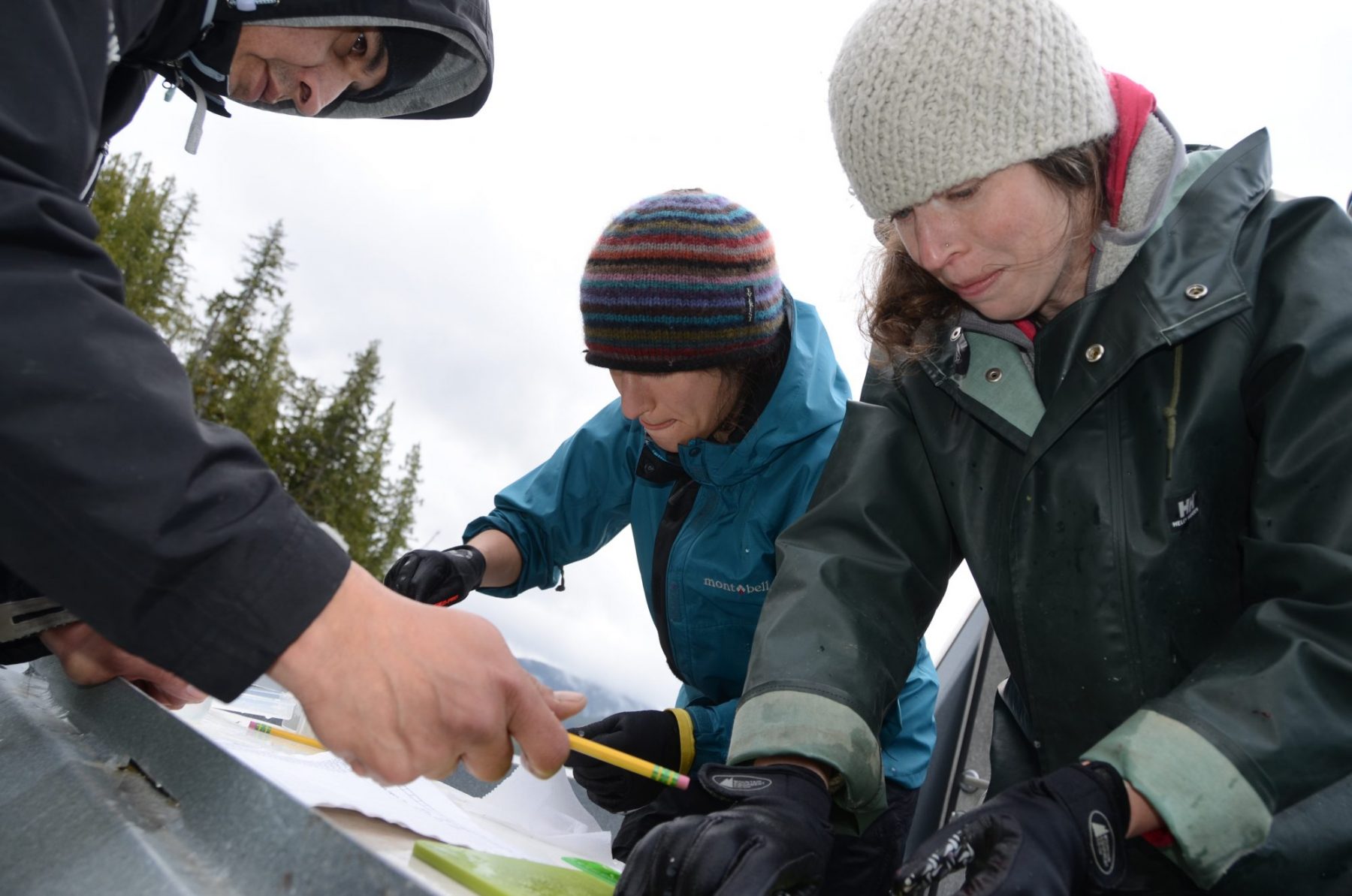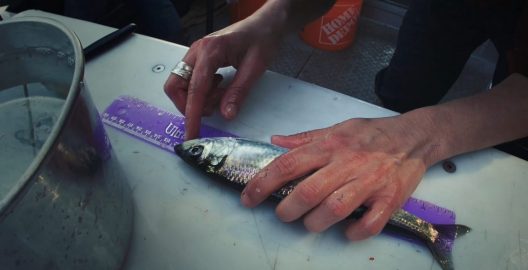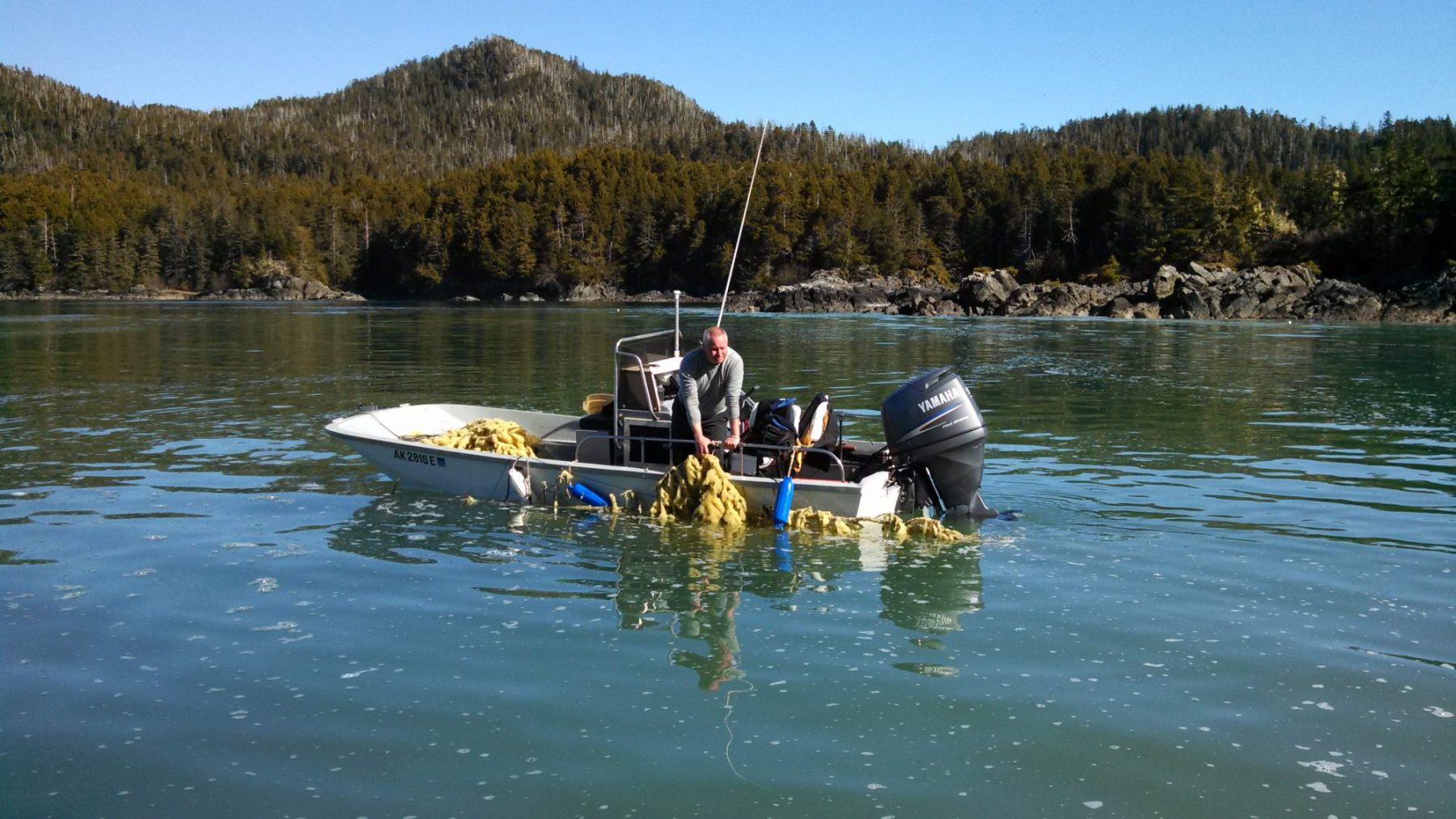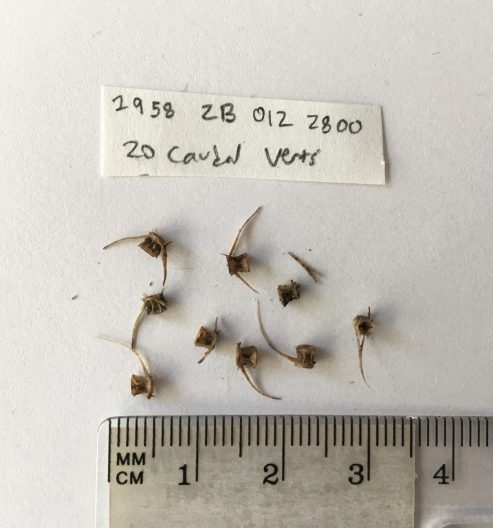DNA sequencing reveals genetic basis of herring biodiversity
Herring that spawn at different times of the year are genetically distinct from one another, according to a new paper published Feb 24th in the Proceedings of the Royal Society B.
The study, led by Eleni Petrou and Lorenz Hauser from the University of Washington School of Aquatic and Fishery Sciences, shows that populations of Pacific herring along the US west coast are genetically structured based on when they spawn and secondarily, where they spawn. These findings run counter to the common commercial fishing practices where herring are targeted and managed by area.
“Our findings show that Pacific herring populations may be at higher risk of unintentional overexploitation by fisheries,” said Petrou. “Most herring fisheries are spatially managed and do not account for genetically and demographically distinct populations occupying the same areas.”
Pacific herring (Clupea pallasii) are an extremely valuable commercial fishery as well as a cultural keystone species for coastal Indigenous communities. Large scale sac roe commercial fisheries for herring in British Columbia and Alaska often target the fish solely for their prized roe or eggs, which are sold to global markets. Traditional subsistence fishing practices by Coast Salish peoples and Alaska Natives take a more sustainable approach by first allowing the herring to return and spawn before harvesting the eggs from hemlock branches, kelp, and hair seaweed.
This research was done in collaboration with Native American Tribes, Alaska Natives, and First Nations who, for generations, have been stewards of these herring fisheries that are an integral part of their cultural identity.
The research team partnered with the Suquamish and Puyallup Tribes in Washington, the Haida Nation and Heiltsuk Nation in BC, and the Sitka Tribe of Alaska, and management agencies (Washington Department of Fish and Wildlife, Department of Fisheries and Oceans Canada, NOAA) to design the sampling scheme and aid in collecting herring samples across the study’s large geographic area, from Washington state north to southwest Alaska. The added citizen science component was immensely beneficial in terms of gathering the samples needed to run the study and providing important historical context through Indigenous traditional ecological knowledge.
“Big declines in herring have been reported after heavy commercial fishing that was localized in a particular bay.” said Petrou. “Elders would tell us that there used to be fish in an area for as long as they could remember and then a large fleet came into the bay and took out 20,000 tons in one season, and they haven’t seen any spawning activity since.”
To supplement the modern herring samples and accounts, the team also analyzed ancient herring bones found at archeological sites in the traditional territories of the Suquamish Tribe and the Puyallup Tribe. These bone fragments were housed in a collection at the Burke Museum and donated for the study.
“We extracted the DNA from the ancient herring bones, and then we compared it to the modern samples to get a sense of which herring populations Coast Salish peoples depended on in the past,” said Petrou.
The results of the analysis show reproductive timing drives the population structure for Pacific herring. Further, these findings can be used to illuminate the life history of herring, both in the distant past and in more contemporary case studies.
The Cherry Point herring population of the northern Puget Sound was once the largest population in the area, supporting a small sac roe fishery before its collapse.
“In the 1970s, that population actually made up more than half of the total biomass in Puget Sound, and now it’s pretty much gone,” said Hauser, professor of aquatic and fisheries sciences and one of the paper’s co-authors. “What Petrou showed in her research is that the population is genetically very distinct from all the other populations, and now it has virtually disappeared.”
The Cherry Point population was petitioned to be listed on the Endangered Species Act twice, in 2000 and 2010, but NOAA believed that the differentiation between early and late spawners was not enough for them to be recognized as a distinct population segment. Currently, the population has yet to recover even though there is no longer any fishing pressure.
Incorporating new research toward the understanding of herring population dynamics can help influence management decisions by guiding sustainable practices and avoiding resource exploitation in a rapidly changing marine environment.
“Identifying the genetic basis of variation in reproductive timing in forage fish such as Pacific herring is important for predicting impacts of climate change, fishing, and other human activities on marine food webs,” Petrou said. Given the ecological, economic, and cultural significance of herring, our results demonstrate the importance of intraspecific genetic diversity on ecosystem processes now and in the future.”
UW co-authors include Petrou, Hauser, Carolyn Tarpey and Isadora Jiménez-Hidalgo. A full list of co-authors is available in the paper.
This research was funded by Washington Sea Grant, Natural Sciences and Engineering Research Council of Canada Strategic Partnership Grant, and a US National Science Foundation award.
For more information, contact Petrou at elpetrou@uw.edu or Hauser at lhauser@uw.edu.



